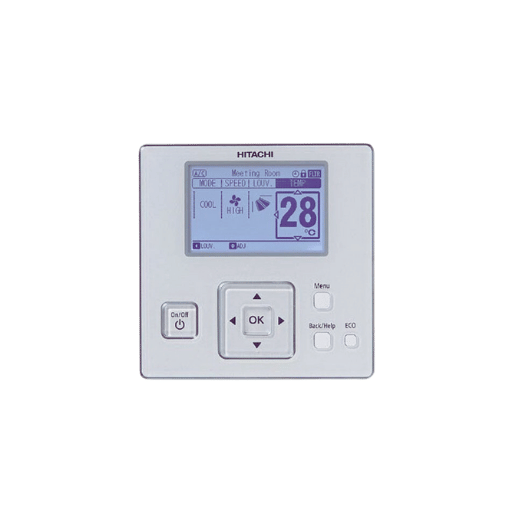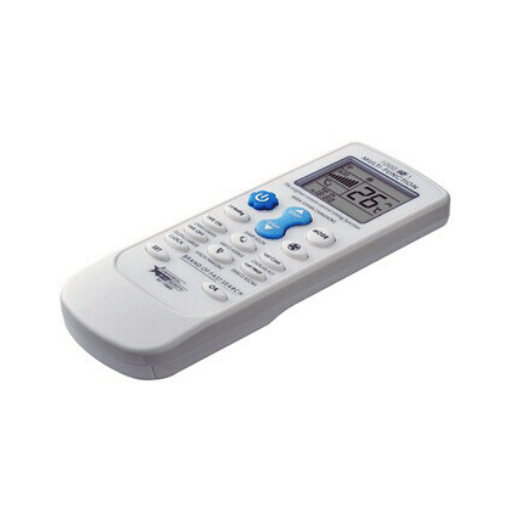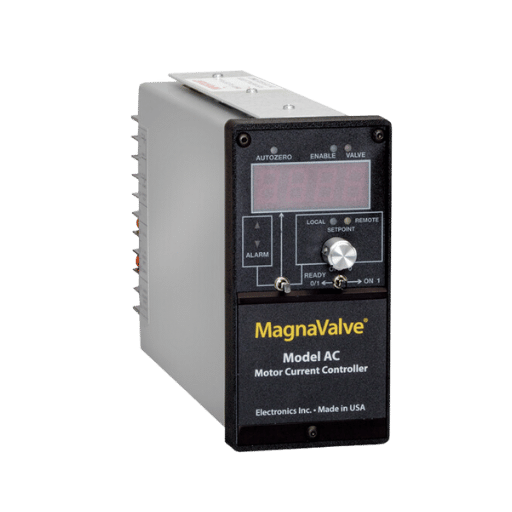The need for smarter and efficient home appliances has increased drastically in today’s constantly evolving day and age. In this category, air conditioners are their big candidates for improvements and modernization. This article goes on to speak about the smart world of AC controllers, which helps in altering the conventional operating mode of air conditioning systems. With the help of these smart devices, end consumers are able to reduce their energy consumption during air conditioning, set the desired temperature and humidity level, and operate the system from any location. While going through this guide, we will be looking at the different types of AC controllers, their major functions, and what benefits they bring to households or firms using them. A hybrid approach will be taken in this work as the engineering aspects of the new developments will be shared along with practical knowledge from field trials and tests to show how these innovations can improve cooling comfort and advance a more eco-friendly and economically viable agenda.

AC controllers are electronic devices that allow conventional AC units to communicate with smart technologies, making these devices more versatile and efficient. Such controllers connect with the existing unit through Wi-Fi, Bluetooth or other means of smart connectivity. Since an AC controller can take command of the operations of the unit, users can adjust temperature levels, energy consumption and operation times of the unit from a smart device, like a phone. Moreover, developing AC controllers with integrated active components and sophisticated algorithms enhances cooling conditions and reduces energy consumption and cost, providing more effective climate control solutions in your room.
Infrared and WiFi technologies enhance AC control by interlinking and allowing communication between the AC unit and control devices. The operating parameters of a room air conditioner can also be changed remotely by an infrared light wave transmitter unit, which operates on a direct line of sight of the air conditioning unit. In such a case, attaching a controller to the device requires the controller and device to point at each other. However, Wi-Fi smart technology offers an efficient enhancement by linking the air conditioner-controlling device to a network. This way, one can operate their air conditioner from their mobile phones or tablets. With this method, one can also seamlessly control various air conditioning functions, schedule a switching on and off time for the units, track energy consumption, and interface with other smart devices in smart homes.
Regarding the management of heating and cooling systems, smart thermostats are also indispensable in today’s AC control. They can recall the settings preferred by the occupants and set the temperatures by not only the residents’ preferences but also the occupancy patterns, thereby minimizing energy waste and costs. Smart thermostats are WiFi enabled, which means that users can track and change their settings from different devices, allowing for complete control of the thermostat from wherever they are. They can also offer additional functionalities like integration into smart home systems, monitoring and analyzing energy consumption, and automatic scheduling; all of these features make them extremely important in modern climate control systems.

First, to connect your phone to the device, go to the specific skill for the Air Conditioners in the app, begin pairing while on the device, and set it up: turn off all other devices aside from Alexa. If you’re using an Android phone, add the smart control to the Google Home app to connect the smart device, verifying it is present. Using an Apple device, launch the Homekit application, press the plus sign, and scan the provided setup code with your controller for integration effectiveness. A certain acceptable level of Wifi connectivity and hardware support is needed for proper functioning on any of the platforms.
There are many benefits in operating your air conditioning system from control apps, such as convenience, energy efficiency, and personal preferences. Apps like Nest, Ecobee, and Honeywell Home have a well-designed UI allowing users to set the schedule for the temperature to change, check how much energy is consumed, or get alarms sent to their mobile or tablet devices whenever certain conditions within the system are met. Some control apps have geofencing capabilities and can change temperature settings based on how close a user is to his home. Moreover, they allow forecasters of energy usage to comprehend energy use better so that energy use can be reduced by making some changes to the device’s settings and making them more energy efficient. All these apps have been gradually redesigned and developed, integrating them with smart assistants. They are an indispensable part of the new reality of climate management.

Smart AC controllers’ role in improving the air quality and comfort level is profound since these units allow for the minute adjustment of climatic settings in the enclosed buildings. For example, smart controllers can work with sensors for humidity and air purity control, thus improving the indoor climate. Moreover, intelligent climate controllers enable improved comfort by offering smart temperature settings based on time and workday schedules, adaptive temperature settings, and the ability to interact with other smart home devices. This guarantees maximum comfort and helps improve home energy efficiency, as management is done through current requirements instead of arbitrary parameters.
The smart AC controller addresses one of the main challenges of most households, high power consumption and utility bills.We can avoid unnecessary cooling system firing simply by maintaining specific temperatures in empty rooms. They do this while monitoring the data, usage density, and user goals. Certain controllers even allow for guiding for optimal use and lowering energy expenditures by moving peak times for energy consumption. Such integration means people don’t use ACs but instead use smarter home systems, reducing energy consumption and AC overhead.
The use of a smartphone for managing AC is an excellent feature that allows for remote climate control, providing an unmatched level of convenience to the users. ‘Smart’ applications enable you to control temperatures, program settings, and get alerts about performance all from your phone. This feature eliminates the need to wait for equilibrium to be reached after arriving home – the correct temperature is set even before the arrival. Even smart home systems and voice assistants make AC and responsive control more effective, which are important requirements in today’s society.

For the broad range of systems and models available in the market today, a smart AC controller can also be predicted to work with mini-splits and heat pumps. You can use such devices by hooking them up to your AC over Wi-Fi, infrared, or standard protocols common to many manufacturers. However, this may depend on the make and model of the air conditioning appliance you wish to integrate this function with. It is always prudent to confirm with the manufacturer or the product’s specifications whether the controller is compatible with your model. This assures smooth integration and maximum utility of the smart controller with your mini-split or heat pump via an AC system.
I can say that incorporating mini splits and heat pumps into a smart grid will allow me to skip every part of the entire HVAC setup. To achieve this kind of connectivity, ensure your smart controller is designed for the mini-split or heat pump you have. Most smart controllers are connected either through Wi-Fi or infrared, so they are compatible with the home network integration. As long as the controller is compatible with the home network, the only thing necessary is pairing the controllers with the existing devices through the app that corresponds with the devices. More specifically, this will allow for intelligent remote, energy-efficient thermostat control and automation, which will be of great use in controlling the temperature in a particular room.

The safety assessment concerning the use of smart AC controllers would be incomplete without looking at the safety and privacy issues raised by the device. The technology found in most smart air conditioning controllers means that they keep and send data such as usage claims, personal settings, and network information over Wi-Fi networks. This information is, however, locked and kept secret as many smart manufacturers use encryption protocols and secure communication standards. However, it is advisable to check whether the smart controller follows the practice of having built-in security mechanisms such as SSL TLS encryption and regular firmware updates. Further, strong, unique passwords should be set, and multi-factor authentication, where available, should be enabled to control your home. Being aware of the manufacturer’s privacy policy and practices of handling and using the user data would also help protect the identity. Such a strategy avoids the risks of security threats and builds confidence in using smart AC controllers in smart home integration.
There is a way to ensure a secure connection with your AC controller by first editing the settings of your home Wi-Fi and setting an elaborate and distinct password to reduce the chance of intrusion. Furthermore, every controller might come in the form of software or system that needs to be upgraded as soon as a higher version is available because, most of the time, they come embedded with vital security upgrades. Network security features such as firewalls and WPA3 encryption can be used to make the system even more secure. Turn on any multi-factor authentication (MFA) features that the app of the smart AC controller has to reduce the chances of anybody remotely controlling the system without permission. Make it a regular habit to check the device security and privacy terms to be sure that the data that you have provided is safe and that it is being used appropriately.
A: An AC controller is a device that empowers you to regulate an air conditioning system or a heat pump from your smartphone or other portable device. It works by transmitting invisible infrared commands to your current air conditioning unit, thus upgrading it with fascinating additional features for remote control, intelligent programming, and interfacing with home networks.
A: A smart infrared AC controller operates by replicating the remote control of the invalid AC using infrared signals directed to the air conditioning unit. The AC controller connects to the house’s wireless network so that wherever a user is, the interfaced smart device can provide a remote accumulator for the AC through an application or voice commands integrated in smart home networks like Google Home.
A: Most products in the category are suitable, with many AC units controllable by infrared remotes or devices. They often include a library of brands and types of AC worldwide, making them virtually universal AC remotes. However, it is best to confirm that your chosen AC model is compatible with the device before purchasing.
A: AC controllers have numerous smart features like temperature control, optimization of schedules, geofencing, voice commands, power management, and integration with other automated facilities. Some of them integrate air conditioning systems and are capable of monitoring air quality to provide appropriate temperature and other settings for maximum comfort with minimum energy usage, which can also be an important parameter in the working of such systems.
A: Smart scheduling, geofencing, the ability to choose when the AC should be turned on or off, current weather conditions, and real-time temperature integration help smart AC controllers save energy. Moreover, many of them will also inform you of how much power was consumed, which will help you check your usage.
A: Some models of multi-split AC controllers allow one multi-split unit to be connected to multiple units. If units are controlling separate indoor AC units, then IP infrastructure is needed for every indoor AC unit and controller. That is because all controller points have to be positioned to enable sending the infrared signals directly to the AC units. However, several other AC controllers can usually be operated with a single application on the phone.
A: Several controllers work with portable air conditioners and mini-split systems, provided the unit is operated through an infrared remote control. Certain controllers are designed specifically as thermostats for mini-split systems and include some functions that are beneficial for these types of air conditioners.
A: In most cases, installing an AC controller is simple. You just need to place the unit in the line of sight of the air conditioner’s receiver, connect it to your Wi-Fi, and then follow instructions on the appropriate application (like the Sensibo app) to install and configure the controller. The application will assist you in picking up your air conditioning unit and testing it to ensure the connection works properly.
A: Yes, it is still possible to use your air conditioning device’s first remote control with the smart controller. Interference of the original remote control provider is what the smart controller does not have, it just adds another method of operating an air conditioner, which includes smart technology, that allows one to control it through a smart phone or other devices connected to the AC.